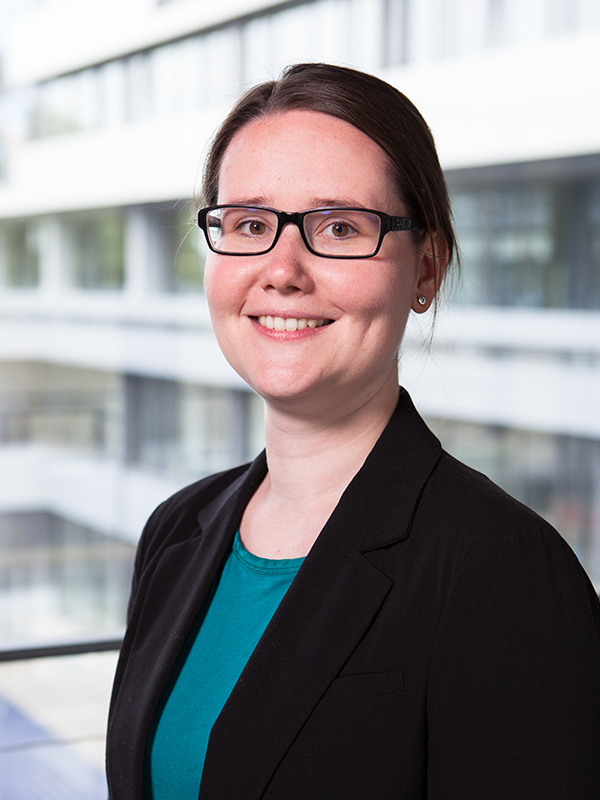Biomechanische und Biomechatronische Systeme
Ein gesellschaftlich bedingt wachstumsstarkes Anwendungsfeld von Methoden und Inhalten der Ingenieurwissenschaften stellt die Medizintechnik dar. Interdisziplinäre Kooperation bietet hier das Potential der Entwicklung von auf den Menschen zugeschnittenen, technisch ausgereiften Lösungen. Der Forschungsschwerpunkt Biomechanische und Biomechatronische Systeme am Lehrstuhl für Produktentwicklung adressiert dieses Forschungsfeld mit einer Vielzahl von abgeschlossenen und laufenden Forschungsprojekten. Die Bezeichnung Biomechanische und Biomechatronische Systeme grenzt das weite Feld der Medizintechnik auf solche Systeme ein, die sich im Kern durch die wechselseitige Interaktion von Mensch und Technik auszeichnen. Im Fokus der Forschung steht aktuell der Bewegungsapparat in den Themenschwerpunkten Neurologische Rehabilitation, Orthetik und Prothetik/Implantattechnik. Dabei zielt der Forschungsschwerpunkt zum einen auf die Entwicklung neuer Produkte zur Behandlung von Volkskrankheiten, wie z. B. Schlaganfall, ab (Produktsicht auf das Themenfeld). Zum anderen rückt der Forschungsschwerpunkt den Versorgungsprozess ins Blickfeld, indem etwa die Effektivität der Versorgung durch Individualisierung gesteigert und gleichzeitig die wirtschaftliche Tragfähigkeit durch Maßnahmen der Digitalisierung erreicht wird (Prozesssicht auf das Themenfeld).
Folgende projektbezogene Entwicklungen geben exemplarisch einen Überblick über die beschriebene Forschungslogik der Arbeitsgruppe
- Therapiesystem für die neurologische Handrehabilitation
- Echtzeit-adaptiver Gangtrainer für die neurologische Rehabilitation
- OEMG-Biofeedbacksystem für die Rehabilitation neuromuskulärer Funktionsstörungen der Hand
- OEMG-Heimsystem für das eigenständige Biofeedbacktraining komplexer Handbewegungen nach einem Schlaganfall
- Funktionelle Elektrostimulation für die neurologische Rehabilitation der oberen Extremität
- Neurorehabilitation motorischer Störungen der oberen Extremität mit verminderter Muskelermüdung
- Feedback-gesteuerte Elektrostimulation des Gangs
- Situationsadaptive Orthese für die therapeutisch korrekte Versorgung von Wirbelsäulenerkrankungen
- Lumbalorthese für die postoperative Versorgung nach Spondylodese
- Therapieschuh für Hallux Valgus Fehlstellungen mittels gezielter Muskelstimulation
- Modulares Knieorthesensystem mit einstellbarer Kongruenz der Gelenke, therapeutisch korrekter Abschulung und messtechnischer Unterstützung
- Modulorthesensystem für die nutzerzentrierte Versorgung von Knieverletzungen
- Sprunggelenkorthese zur Korrektur pathologischer Gangmuster und energetischen Optimierung des Gangs
- Bewegungstrainer zur Förderung der Implantateinheilung von Hüftendoprothesen
- 3D-expandierbares Cage-Implantat für die minimalinvasive intervertebrale Spondylodese der osteoporotischen Wirbelsäule
- Versuchsstand zur Entwicklung von sensorbasierter neuronal-adaptiver Prothetik
Publikationen und Konferenzbeiträge des Forschungsschwerpunkts
-
Design of a personalised electrode sleeve for differentiation of finger muscle activity in sEMG biofeedback therapy
Sure, C.; Selkmann, S.; Kossack, F.; Neumann, M; Bender, B. (2025). Accepted for presentation at the 25th International Conference on Engineering Design (ICED25), Dallas, Texas, USA. -
Simplified versus realistic loading conditions in spine modeling: numerical case study with lumbar fixation.
Remus, R.; Lipphaus, A.; Neumann, M. and Bender, B. (2025). Accepted for presentation at the 30th Congress of the European Society of Biomechanics
(ESB), July 6–9, Zürich, Switzerland. -
Adjacent Segment Biomechanics after Lumbar Fusion Depends on Simplified or Realistic Spinal Loading Conditions: A Comparative Numerical Study.
Remus, R.; Ritter, M; Selkmann, S.; Neumann, M. and Bender, B. (2025). Accepted for presentastion at the XXX Congress of the International Society of Biomechanics (ISB), July 27–31, Stockholm, Sweden. -
A muscle-driven spine model for predictive simulations in the design of spinal implants and lumbar orthoses
Remus, R.; Lipphaus, A.; Ritter, M.; Neumann, M.; Bender, B. (2025). Bioengineering 12(3), 263. DOI: 10.3390/bioengineering12030263. -
Muscle fatigue classification during FES: a study on isometric, dynamic, and hybrid contraction datasets
Selkmann, S., Neumann, M.; Lipphaus, A.; Bender, B. (2025) Accepted for poster presentation at the 30th Congress of the European Society of Biomechanics (ESB), July 6–9, Zürich, Switzerland. -
Feature Selection for Muscle Fatigue Classification During Functional Electrical Stimulation (FES)
Selkmann, S.; Sure, C.; Remus, R.; Neumann, M.; Bender, B. (2025). Accepted for presentastion at the XXX Congress of the International Society of Biomechanics (ISB), July 27–31, Stockholm, Sweden. -
Simulation of FES on the forearm with muscle-specific activation resolution
Baier, J.; Selkmann, S.; Bender, B. (2024). In Frontiers in Bioengineering and Biotechnology 12. DOI: 10.3389/fbioe.2024.1384617. -
Soft tissue material properties based on human abdominal in vivo macro-indenter measurements
Remus, R.; Sure, C.; Selkmann, S.; Uttich, E.; Bender, B. (2024). Frontiers in Bioengineering and Biotechnology 12. DOI: 10.3389/fbioe.2024.1384062. -
Applications and limitations of forward dynamic active hybrid spine models with a muscle-driven approach.
Remus, R.; Selkmann, S.; Lipphaus, A.; Neumann, M.; Bender, B. (2024). Presented at the 50th Annual Meeting ISSLS 2024, Milan, Italy. -
Functional electrical stimulation induced fatigue in isometric and isotonic forearm muscle contractions
Selkmann, S.; Sure, C.; Remus, R.; Neumann, M.; Bender, B. (2024). Presented at the 29th Congress of the European Society of Biomechanics (ESB), Edinburgh, Scotland. -
Comparsion of FES induced muscle fatigue during isometric and isotonic forearm muscle contractions
Selkmann, S.; Sure, C.; Neumann, M.; Bender, B. (2024). In: Watanabe, K. (Ed.), ISEK XXIV. Presented at the ISEK, Nagoya, Japan, p. 96. -
Distribution of forearm SEMG amplitude during isolated and combined activation of extrinsic hand and finger muscles
Sure, C.; Selkmann, S.; Neumann, M.; Bender, B. (2024). In: Watanabe, K. (Ed.), ISEK XXIV. Presented at the ISEK, Nagoya, Japan, p. 108. -
Muscle-driven forward dynamic active hybrid model of the lumbosacral spine: combined FEM and multibody simulation
Remus, R.; Selkmann, S.; Lipphaus, A.; Neumann, M.; Bender, B. (2023). Frontiers in Bioengineering and Biotechnology 11, 1–23. DOI: 10.3389/fbioe.2023.1223007 -
Biomechanical effects of lumbar multifidus and psoas major muscle dysfunction on the lumbosacral spine
Remus, R., Lipphaus, A., Selkmann, S., Bender, B. (2023). In: ESB 2023: 28th Congress of the European Society of Biomechanics. Presented at the ESBiomech 2023, European Society of Biomechanics, Maastricht, p. 587 -
Biomechanical influence of the cage lordosis in an anterior lumbar interbody fusion at L4-L5: A simulation study
Remus, R., Neumann, M., Lipphaus, A., Bender, B. (2023). In: ISB/JSB 2023: XXIX Congress of International/Japanese Society of Biomechanics . Presented at the ISB/JSB 2023, International Scoiety of Biomechanics, Fukuoka, p. 276 -
Simulation environment for the development of neuromuscular stimulation systems
Selkmann, S., Baier, J., Remus, R., Neumann, M., Bender, B (2023). In: ESB 2023: 28th Congress of the European Society of Biomechanics. Presented at the ESBiomech 2023, European Society of Biomechanics, Maastricht, p. 635 -
Differentiating activity of forearm finger flexors and extensors for SEMG biofeedback training
Sure, C., Selkmann, S., Neumann, M., Bender, B. (2023). In: ISB/JSB 2023: XXIX Congress of International/Japanese Society of Biomechanics . Presented at the ISB/JSB 2023, International Scoiety of Biomechanics, Fukuoka, p. 537 -
Challenges in the Development of Biomechatronic Systems
Neumann, M., Bender, B. (2022). In: Krause, D., Heyden, E. (Eds.), Design Methodology for Future Products. Springer Cham, Cham, pp. 105–122. DOI: 10.1007/978-3-030-78368-6_6 -
An approach to transfer biological solutions based on the interaction of mechanisms to technical products
Bartz, M., Uttich, E., Wanieck, K., Bender, B., Wartzack, S. (2021). Proceedings of the Design Society 2, 831–840. DOI: 10.1017/pds.2022.85 -
Applications and limitations of finite element method, multibody simulation, and hybrid modeling in bone biomechanics
Lipphaus, A.; Uttich, E.; Remus, R.; Hoffmann, A.; Bender, B.; Witzel, U. (2021). Osteologie 30, 4. DOI: 10.1055/s-0041-1736721 -
Calibration and validation of a novel hybrid model of the lumbosacral spine in ArtiSynth - The passive structures
Remus, R.; Lipphaus, A.; Neumann, M.; Bender, B. (2021). PLoS ONE 16(4): e0250456. DOI: 10.1371/journal.pone.0250456 -
An Active Hybrid Model of the Human Lumbosacral Spine: Simple and Robust Modeling of Facet Joints
Remus, R.; Hoffmann, A.; Bender, B. (2021). In ISSLS Virtual Annual Meeting, May 31 - June 4, 2021, p.181 -
Instantaneous axis of rotation as indicator for lumbar intervertebral disc degeneration – A simulation study
Remus, R.; Hoffmann, A.; Bender, B. (2021). 26th Congress of the European Society of Biomechanics, July 11-14, 2021, Milan, Italy -
Sensitivity of biomechanical responses in path optimized follower loads considering the lumbosacral load sharing
Remus, R.; Uttich, E.; Bender, B. (2021). XXVIII Congress of the International Society of Biomechanics from the 25 – 29 July, Digital Congress -
Digitale Zwillinge in Interaktion mit Menschmodellen
Neumann, M.; Remus, R.; Sauerhoff, M.; Lipphaus, A.; Uttich, E.; Sure, C.; Baier, J.; Bartz, M.; Bender, B. (2020). ZWF Zeitschrift für wirtschaftlichen Fabrikbetrieb: Vol. 115, No. special, pp. 116-120. DOI: 10.3139/104.112327 -
Knieorthesen-Modulsystem zur Verbesserung der individuellen Passgenauigkeit bei unterschiedlichen Schenkelumfängen — Modulsystem gewährleistet individuelle Passgenauigkeit auch bei unterschiedlichsten Schenkelumfängen
Sauerhoff, M.; Neumann, M.; Bender, B. (2020). Orthopädie Technik - Rehabilitation, Medizinprodukte: 71(4). pp. 48-51. Apr. 2020 -
An approach to compare tension chording concepts by using combined multibody and finite element simulation
Uttich, E.; Bender, B. (2020). In: Krause, D., Paetzold, K., Wartzack, S. (Eds.), Proceedings of the 31st Symposium Design for X. Presented at the Symposium Design for X, TuTech Innovation, Hamburg, pp. 11–20. https://doi.org/10.35199/dfx2020.2 -
Examining the tension chording principle for a beam under torsion load.
Uttich, E.; Bartz, M.; Bender, B. (2020). Proceedings of the Design Society / International Conference in Engineering Design 1, 431–440. DOI: 10.1017/dsd.2020.60 -
Transfer of lightweight design principles from the musculoskeletal system to an engineering context.
Bartz, M.; Uttich, E.; Bender, B. (2019). Design science 5, 1–21. DOI: 10.1017/dsj.2019.17 -
Methodisches Entwickeln von Anforderungen in der Produktentwicklung.
Song, Y.-W.; Kossack, F.; Bender, B. (2019). In Design for X: DS 98: Proceedings of the 30th Symposium Design for X (DFX 2019), 18-19 September 2019, Jesteburg, Germany, pp. 123–134. doi: 10.35199/dfx2019.11 -
Factors preventing the use of a lightweight design workflow that is Inspired by the human locomotive system.
Uttich, E.; Bartz, M.; Bender, B. (2019). Proceedings of the Design Society / International Conference in Engineering Design 1, 2705–2714. doi: 10.1017/dsi.2019.277 -
Development of an Anatomically-Based Forearm Model to Simulate Selective Muscle Activation
Baier, J.; Jedowski, J.; Loitz, J.; Neumann, M.; Bender B. (2018). In Book of Abstracts: 22nd Annual IFESS Conference 2018; 29.-31.08.2018 Nottwil -
Examing lightweight design potential of the human musculoskeletal system by using the example of an articulated arm robot
Bartz, M.; Brand, H.; Bender B. (2018). In Book of Abstracts: 1. Symposium for Lightweight Design in Product Development; 13. - 15. Juni 2018 Zürich -
Development of a bioinspired approach for the design of kinematic chains
Bartz, M.; Gößling, R.; Remus, R.; Bender B. (2018). Proceedings of the DESIGN 2018 15th International Design Conference. doi:10.21278/idc.2018.0330 -
Anwendung der Leichtbauprinzipien des Muskel-Skelett-Systems auf einen Gelenkarmroboter
Bartz, M.; Remus, R.; Bender, B. (2018). Konstruktion - Zeitschrift für Produktentwicklung und Ingenieur-Werkstoffe, 7-8-2018, pp. 84-90, 2018. ISSN: 0720-5953 -
Systematic review of the mechanisms of action in the musculoskeletal system as a basis for new simulation models.
Uttich, E.; Bartz, M.; Gößling, R.; Bender, B. (2018). Poster, presented at the 8th World Congress of Biomechanics, 08.07.2018 – 12.07.2018, on 09.07.2018 in Dublin. -
Entwicklung eines bioinspirierten Gelenkarmroboters mithilfe der Kopplung von Mehrkörpersimulation und Topologieoptimierung
Bartz, M.; Gößling, R.; Remus, R.; Schafran, T.; Bender, B.. In 35. CADFEM ANSYS Simulation Conference: die Fachkonferenz zur Numerischen Simulation in der Produktentwicklung, 15.-17. November 2017 in Koblenz -
Inversdynamische Berechnungen der Muskelkräfte am Glenohumeralgelenk unter der Prämisse der Biegeminimierung
Uttich, E.; Gößling, R.; Bartz, M.; Bender, B. (2017). In: 35. CADFEM ANSYS Simulation Conference. Presented at the Forum Digital City, CADFEM GmbH, Grafing bei München. -
Form and Function - Exemplary Analysis of the Significance for the Design of Rehabilitation Devices
Baier, J.; Kuchinke, L.; Neumann, M.; Bender, B. (2017). ICORR 2017, International Conference on Rehabilitation Robotics, 17-20th July 2017. DOI: 10.1109/ICORR.2017.8009336









